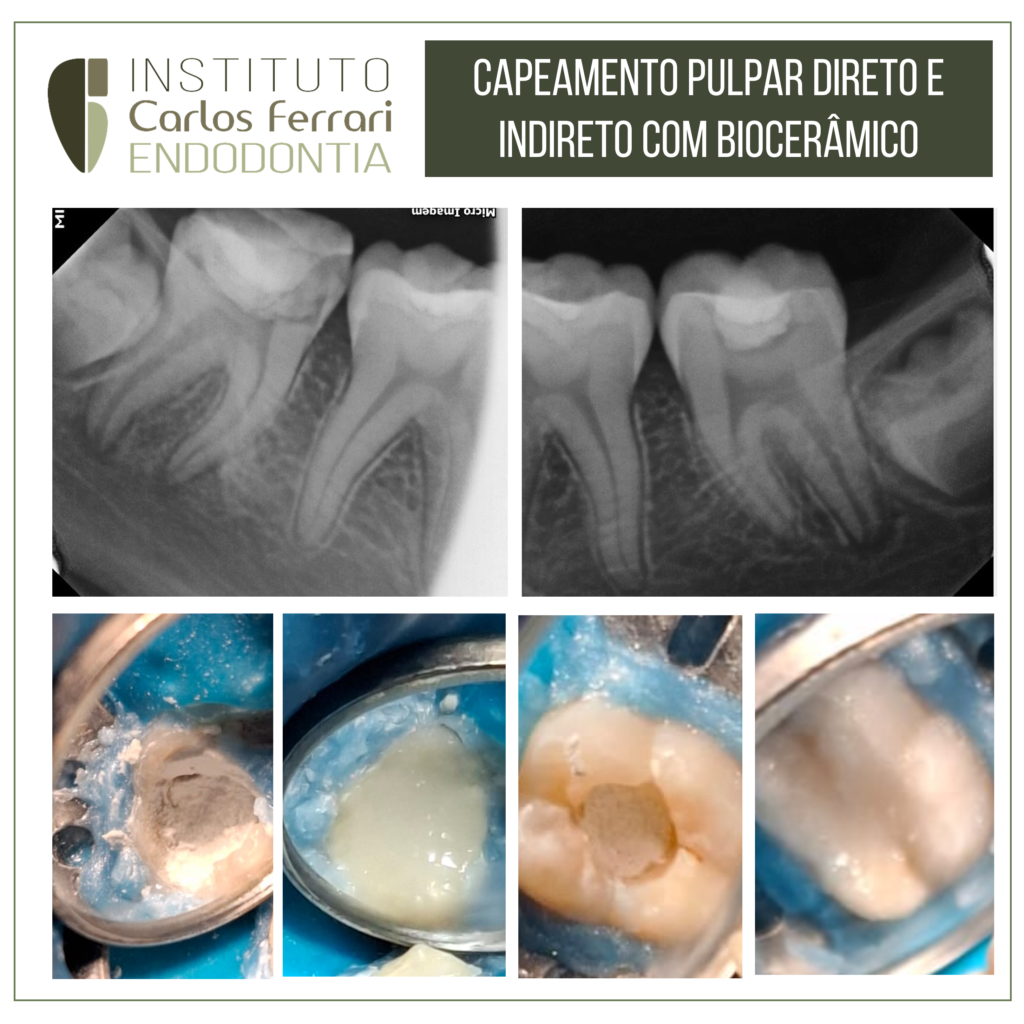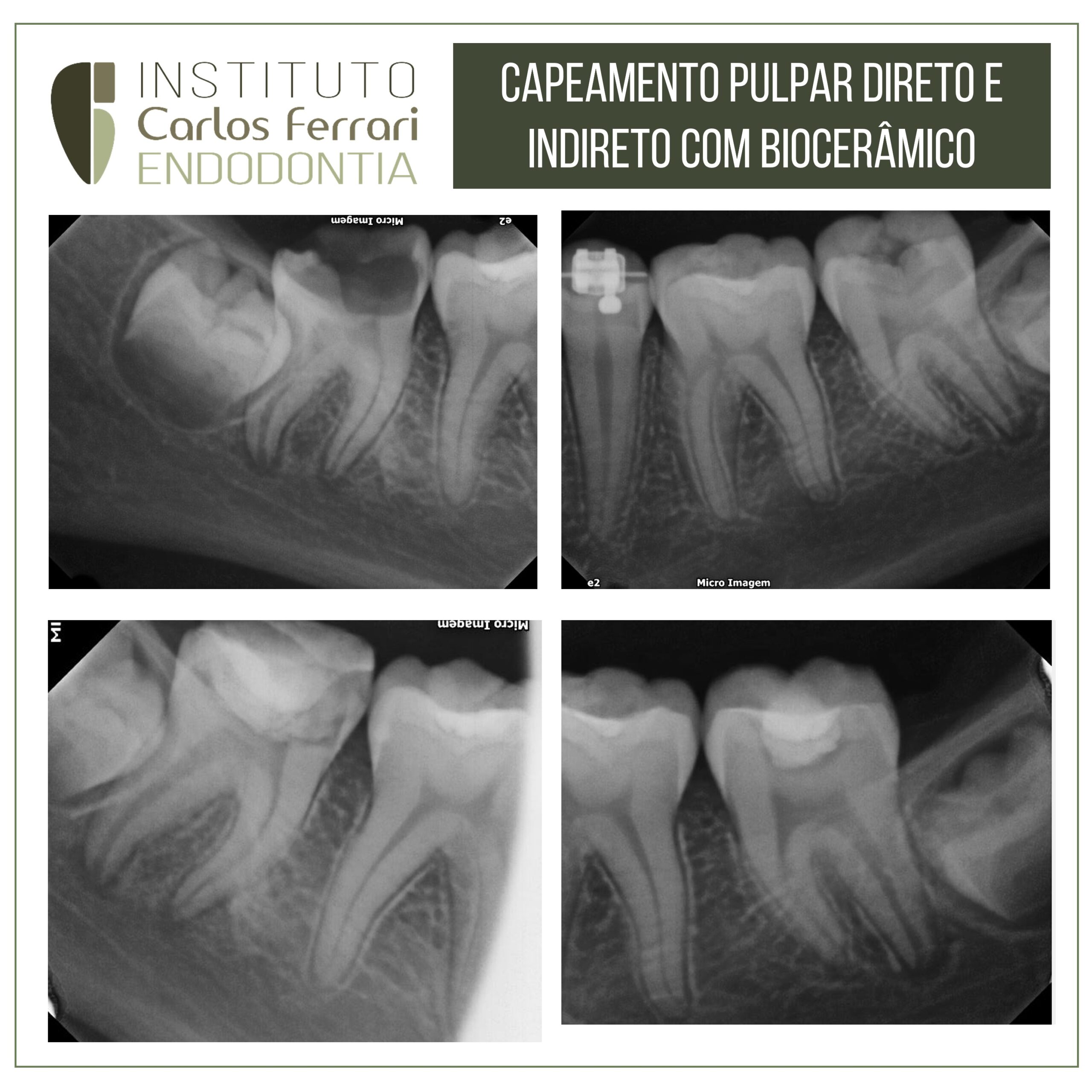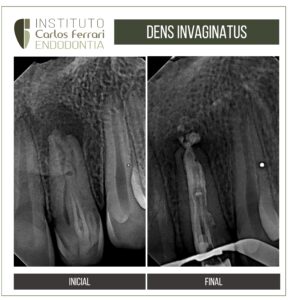Direct and indirect pulp capping with bioceramic. A 12-year-old female patient came to the clinic complaining of pain on ice cream on the lower right side. Clinical examination revealed extensive caries on tooth 46 and reversible pulp inflammation. There was also caries on tooth 37, without pulp inflammation.
Radiographic examination revealed the two teeth in Nolla stage 8.



Direct pulp capping was then performed on tooth 47 and indirect pulp capping on tooth 37 with MTA Repair (Angelus).
Case conducted by student Nathália Rios, from the endodontics specialization class at HPG Brasília.
Direct pulpal capping with MTA:
Endodontic therapies in deciduous teeth aim to maintain these elements with the purpose of maintaining space in the dental arch. Among the conservative endodontic therapies, direct pulpal protection stands out. This treatment is a procedure in which an exposed dental pulp is covered with a drug or material that protects it from further injury, allowing its repair. This procedure is performed when there is accidental microexposure of the pulp, according to certain criteria, such as: absence of spontaneous painful symptomatology, absence of periapical lesion, young dental age, and physiological rhizolysis of less than one third of the root. Currently, direct pulp protection is a proven effective procedure.
In a study with dog teeth, Faraco Jr, Holland demonstrated, through histological analysis, the formation of a dentin bridge in 84.6% of the dental elements after direct pulp protection. In this context, the material used in contact with the pulp remnant is relevant, since it is necessary to maintain the integrity of the root pulp. Among these materials, the iodoformed pastes, calcium hydroxide pastes and Mineral Trioxide Aggregate (MTA) stand out.
In: Fidalgo et al. Rev Odontol UNESP, Araraquara, v. 38, n. 6, p. 383-87, nov./dez. 2009
https://www.youtube.com/watch?v=GoV4JybRpi8&list=PLek9BAmgAJf8K1ImjjDiQP9pzj_IGr4fi





